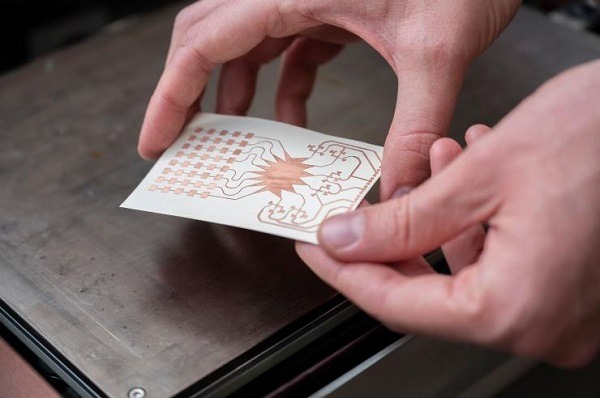A positive move towards a battery-free IoT
Researchers at Georgia Tech USA have found a way to charge IoT devices or sensors wirelessly, harnessing the power of IoT and 5G. Sean Carroll finds out more.
The Georgia Tech School of Electrical Computing and Engineering, more specifically, the Agile Technologies for High-Performance Electromagnetic Novel Applications (ATHENA) Group has leveraged IoT and 5G to create a way to wirelessly charge devices.
This isn’t some over-the-counter charging pad that you can get today, this is a high-level charging solution based on the Rotman lens-based rectifying antenna system which is capable, for the first time, of millimetre-wave harvesting in the 28GHz band.
Dubbed the ‘Rectenna’, the aim of the project is not just to enable wireless charging, but to work towards a future of battery-less devices.
ADVERTISEMENT
Manos M. Tentzeris is a Georgia Tech (GT) professor (Ken Byers Professor in Flexible Electronics) and the head of the ATHENA group. He has been working in world-leading ambient RF harvesting research since 2010.
“Using this architecture, we are looking to develop a future in which cellular providers can deliver power to IoT devices using their 5G infrastructure,” Manos explains.
“This enables the dense and widespread deployment of battery-less devices, even in locations that would otherwise be highly impractical: devices could even be embedded into the concrete of buildings, for instance.”
He says that since the RF/mm-wave power of a 5G signal is much more powerful than its 4G counterpart it’s strong enough to power a device: “Millimetre-wave 5G base stations can focalise their emitted power much more efficiently than their 4G counterparts. The first innovation is that we realised this potential.
“However, at those frequencies, harvester antennas become very small and cannot, therefore, receive power from very far away. Another option is to array these individual antennas to increase the footprint of the rectenna and receive more power. This leads to very directive antenna structures, which cannot efficiently receive power from all directions.”
That’s where the Rotman lens steps it. It’s able to provide six fields of view simultaneously which lets the operators create a controlled grid of signals.
“With this innovation, we can have a miniaturised fully printed electrically-large antenna array, which works at higher frequencies and can receive power from any direction. It is direction-agnostic, which makes it a lot more practical,” Georgia Tech ATHENA Lab senior adviser and Atheraxon co-founder, a spinoff of GT, Jimmy Hester says.
“People have attempted to do energy harvesting at high frequencies like 24 or 35GHz before, but such antennas only worked if they had a line of sight to the 5G base station; there was no way to increase their angle of coverage until now,” Aline Eid, a senior PhD student in Athena lab, says.
Manos adds that by integrating the Rotman lens, it now offers the ability to collect energy from all directions and at long ranges in ‘direction agnostic’ implementations.
The work was supported by the Air Force Research Laboratory and the National Science Foundation (NSF) – Emerging Frontiers in Research and Innovation program in the United States but there is a multitude of possible applications in the commercial space.
Some of the potential applications Manos lists are long-rang, omnidirectional sensors for digital twinning in smart cities, smart infrastructure, Internet of Things, autonomous cars, smart cities and smart agriculture. There are also several possible uses in residential technology like removing the need for cables, easy battery replacement or embedded structural integrity or chemical sensors.
The most exciting part is that the product isn’t finished. The ATHENA Group is still hoping to improve on the technology, making it much more efficient and compact for end-use.
“The plan is to merge all six diodes and DC combiner currently separately placed on the rectenna into one chip. We are also working on improving the rectifier design to enable higher sensitivity rectification, thus longer ranges,” Aline explains.
By the time integrators can start to get their hands on this technology, it will be fully actualised and ready to meet its new applications.
And Manos adds that what seems like something right out of a sci-fi movie could be right around the corner: “It could be deployed in two to three years. We are discussing partnerships with the major 5G providers to enable this deployment.”
-
ADVERTISEMENT
-
ADVERTISEMENT
-
ADVERTISEMENT
-
ADVERTISEMENT

